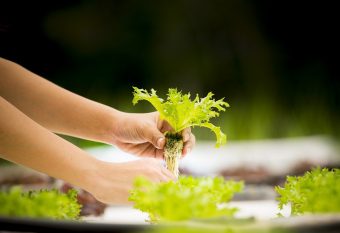
Vibrant rural economies emerge when farms and small businesses work closely together, pooling resources and advocating as a group about the issues that matter to them. Yet in Bosnia and Herzegovina (BiH), small family farms too often operate in isolation. By themselves, they often lack the resources, knowledge or skills they need to thrive.
IFAD is bringing small-scale farmers, small and medium enterprises (SMEs), and other agriculture stakeholders in BiH into clusters to work together for their common interests. We caught up with Violeta Lemic, a technical specialist for IFAD, to learn how clusters work and why they matter.
What is a cluster anyway?
A cluster is a way for businesses to come together to share resources, implement initiatives and advocate for the interests they share. Other platforms bring together stakeholders who operate in a specific part of the value chain, such as producer organizations. But in clusters, the members come from across the value chain.
Clusters group stakeholders by geography. A typical cluster might contain farmers, cooperatives and producer organizations, suppliers of inputs, buyers, financial and technical agents, agricultural authorities, universities and local municipalities, who are all located in a specific region. They have different strengths and resources, but they’re all invested in shared prosperity.
When the RCDP project team discussed this idea with small-scale farmers and other stakeholders in BiH, they soon saw its value. The farmers themselves established and registered clusters. It’s been a bottom-up initiative.
Clusters can also help organize farmers into cooperatives. This is especially important in BiH, where small-scale farmers often work in isolation. In fact, clusters have already led to the establishment of five farming cooperatives, and consolidated 12 more. Together, these have organized a network of 700 farmers.
More:
What do these clusters actually do?
Clusters vary in size and scope, but I’ll give you an example to illustrate how they operate.
The Gradiška Laktaši Srbac (or GLS) cluster, in northern BiH, has 12 members: five SMEs, three producer organizations representing multiple farmers, one farming cooperative (again, with several members), and three farm businesses. The cluster meets regularly to collectively plan and implement initiatives designed to increase the competitiveness of its members.
One such initiative relates to blueberries, which are grown by a dozen farmers in the area. The cluster members pooled their resources and arranged for specialized advisory services for the farmers. They also arranged for subsidized inputs, and they collectively launched a promotional campaign with the slogan: “I opt for blueberries – locally produced and fresh.” Demand shot up and the blueberries were sold at very good prices.
Several local brands have even emerged through these clusters. Consumers across BiH now know to look for Slatina tomatoes, Srbac blueberries or Nevesinje potatoes.
What benefits do clusters bring to members?
Through clusters, small-scale farmers and SMEs can do things they couldn’t manage alone, such as negotiating discounts on inputs, marketing their products, or lobbying policymakers.
For example, clustered agribusinesses can share workers amongst themselves. If these businesses were on their own, they might not have been able to offer full-time jobs individually. At the same time, these jobs provide a solution to rural unemployment and migration, which municipalities struggle to deal with. And local universities and extension services benefit from a growing agriculture sector that employs their students and drives policy dialogue on research and innovation.
Clusters are also platforms for advocacy. For example, to qualify for BiH’s agricultural subsidies, plots for growing gherkins had to be at least 0.5 hectares in size – the same as other vegetables. One cluster pointed out that, in reality, no family farm cultivates gherkins on more than 0.2 hectares. The minimum plot size was amended, unlocking subsidies for small-scale gherkin farming. Outside a cluster, gherkin farmers wouldn’t necessarily have had the clout or organization to effectively make this policy argument.
What have you learned from implementing clusters in BiH? And what’s next?
Clusters need government incentives to get started, but they’re most sustainable with a bottom-up approach. At the beginning, we conducted participatory workshops to convince stakeholders to form clusters using democratic decision-making processes.
Maintaining them over time is a challenge, but clusters with paid, full-time managers tend to do better than those that are managed by volunteers. So, we suggest that clusters should tap into income streams like membership fees, donations, public support funds and project proposals.
Right now there are seven clusters across BiH. The smallest has 8 members and the largest, 28 – keeping in mind that a “member” can be something like an SME or cooperative that brings multiple farmers into the network. We’re now positioning clusters as regional development agencies, which allows us to connect stakeholders from different value chains.
Clustering is a great way to formally organize a complex sector like agriculture, promote development and accelerate change. To quote the old proverb: if you want to go fast, go alone; if you want to go far, go together.
Source: IFAD





